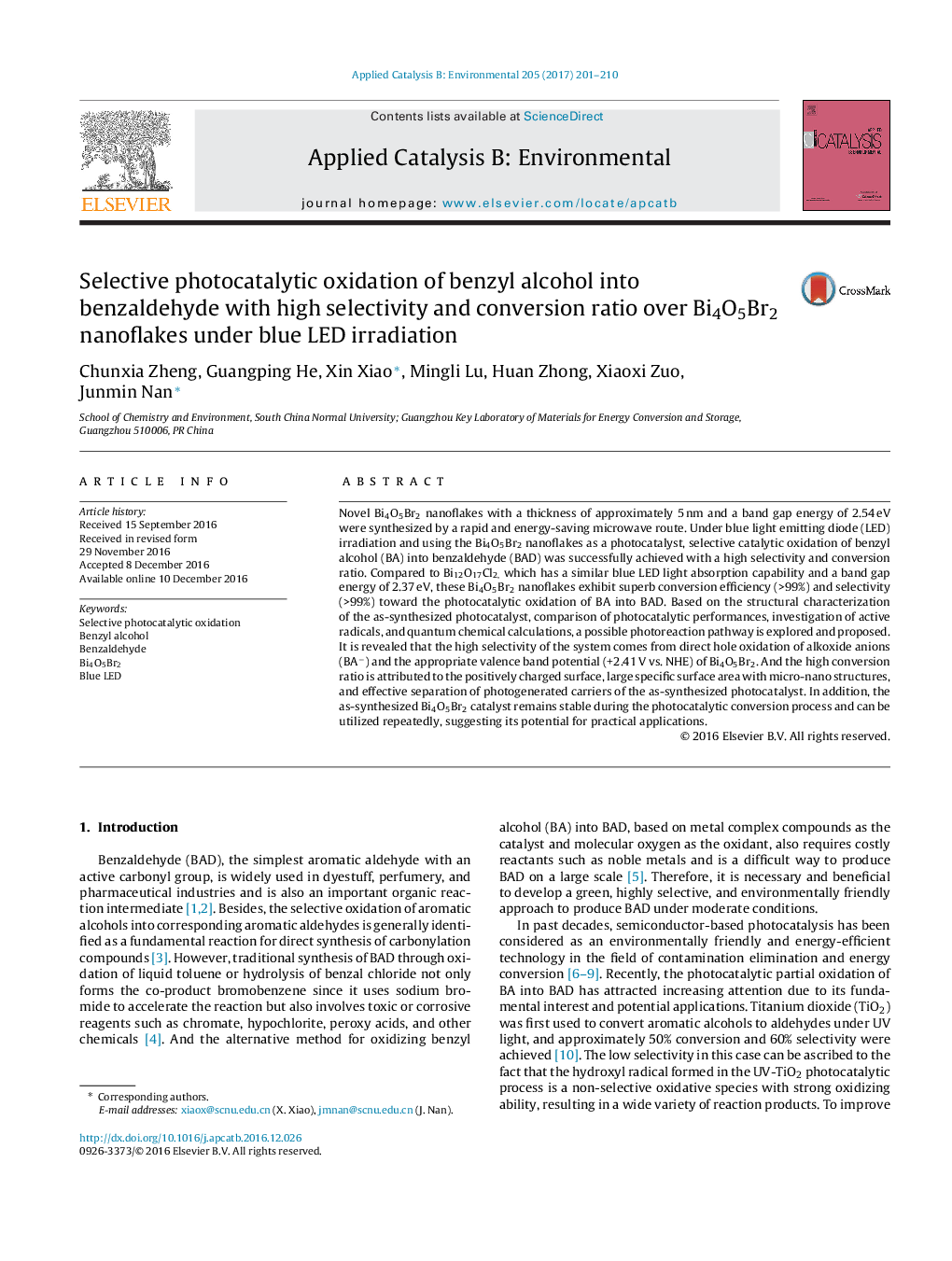| Article ID | Journal | Published Year | Pages | File Type |
|---|---|---|---|---|
| 6454308 | Applied Catalysis B: Environmental | 2017 | 10 Pages |
â¢Bi4O5Br2 nanoflakes with a thickness of approximately 5 nm are synthesized by a rapid and energy saving microwave route.â¢Bi4O5Br2 nanoflakes show excellent conversion efficiency (>99%) and selectivity (>99%) toward photocatalytic oxidation of BA into BAD under blue LED.â¢A possible mechanism of selective photocatalytic oxidation with high selectivity and conversion ratio is proposed based on experimental results and DFT calculations.
Novel Bi4O5Br2 nanoflakes with a thickness of approximately 5Â nm and a band gap energy of 2.54Â eV were synthesized by a rapid and energy-saving microwave route. Under blue light emitting diode (LED) irradiation and using the Bi4O5Br2 nanoflakes as a photocatalyst, selective catalytic oxidation of benzyl alcohol (BA) into benzaldehyde (BAD) was successfully achieved with a high selectivity and conversion ratio. Compared to Bi12O17Cl2, which has a similar blue LED light absorption capability and a band gap energy of 2.37Â eV, these Bi4O5Br2 nanoflakes exhibit superb conversion efficiency (>99%) and selectivity (>99%) toward the photocatalytic oxidation of BA into BAD. Based on the structural characterization of the as-synthesized photocatalyst, comparison of photocatalytic performances, investigation of active radicals, and quantum chemical calculations, a possible photoreaction pathway is explored and proposed. It is revealed that the high selectivity of the system comes from direct hole oxidation of alkoxide anions (BAâ) and the appropriate valence band potential (+2.41Â V vs. NHE) of Bi4O5Br2. And the high conversion ratio is attributed to the positively charged surface, large specific surface area with micro-nano structures, and effective separation of photogenerated carriers of the as-synthesized photocatalyst. In addition, the as-synthesized Bi4O5Br2 catalyst remains stable during the photocatalytic conversion process and can be utilized repeatedly, suggesting its potential for practical applications.
Graphical abstractDownload high-res image (200KB)Download full-size image
